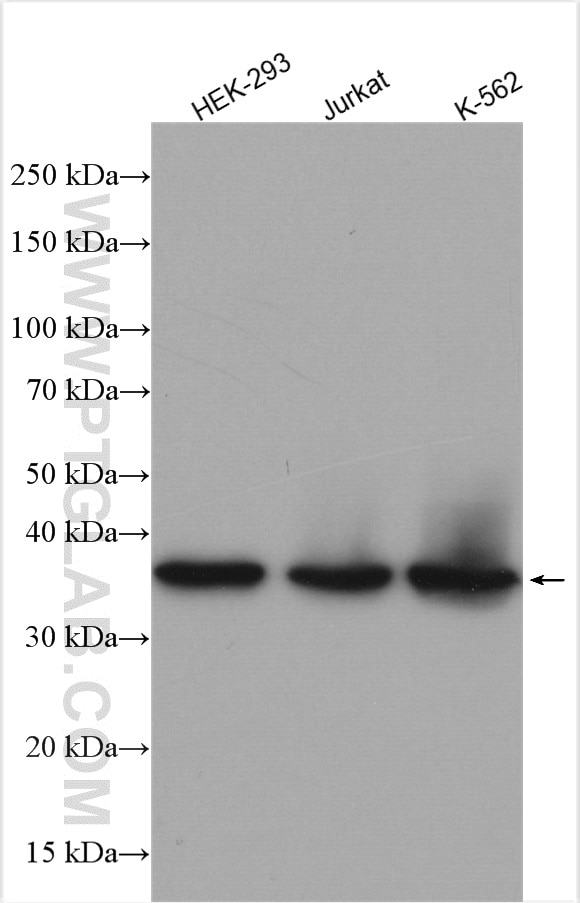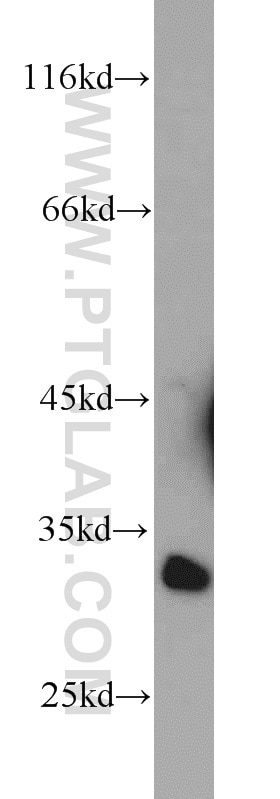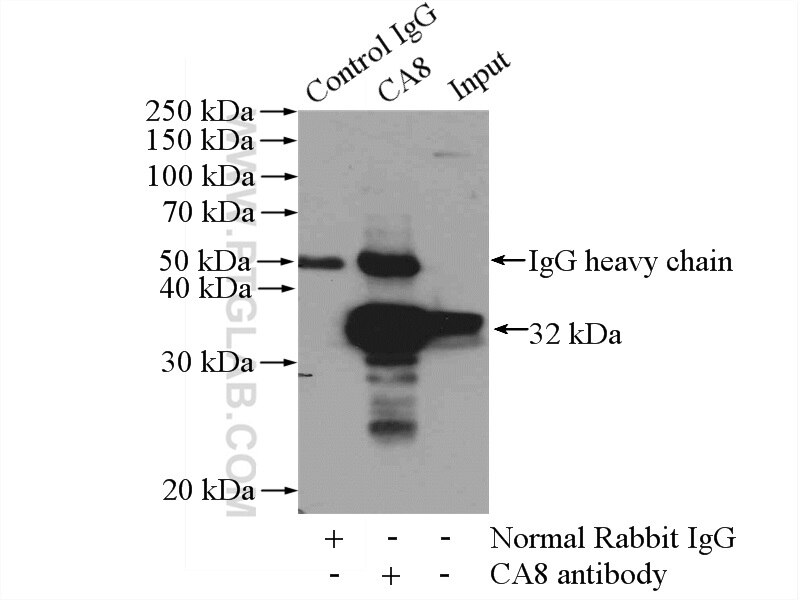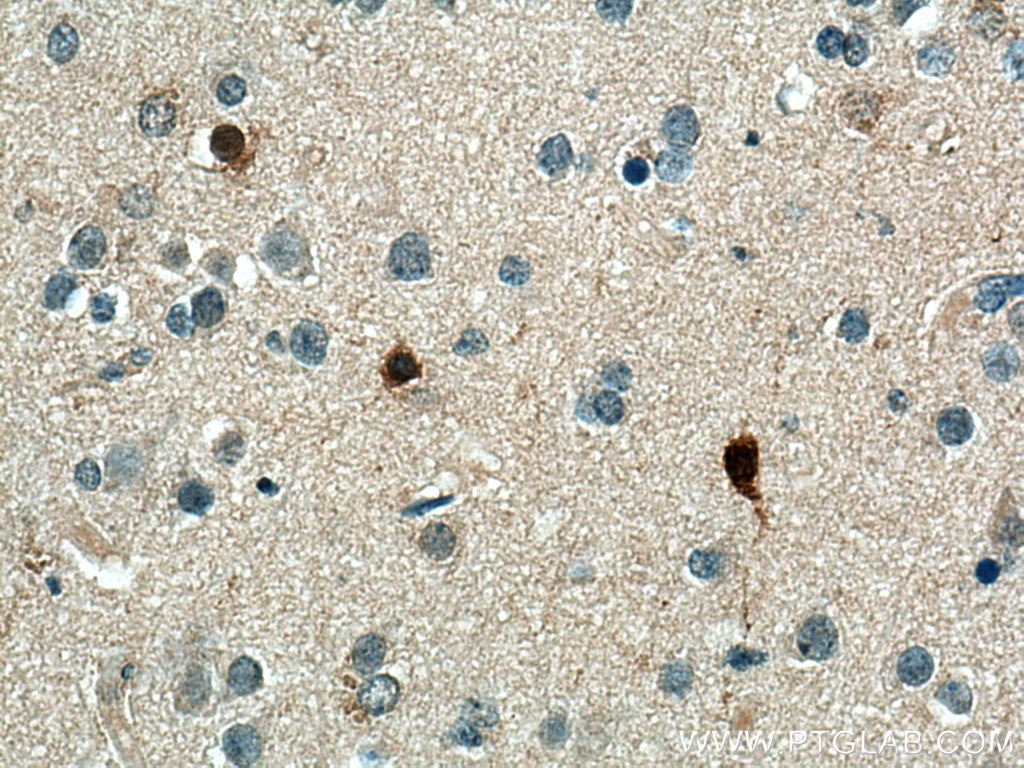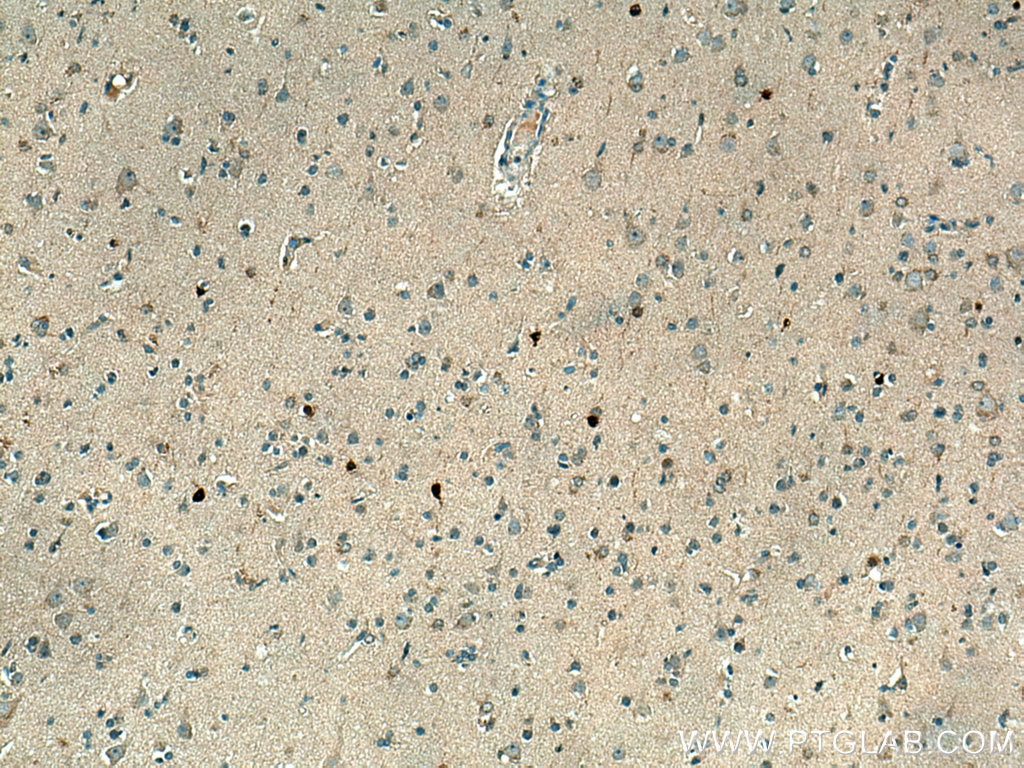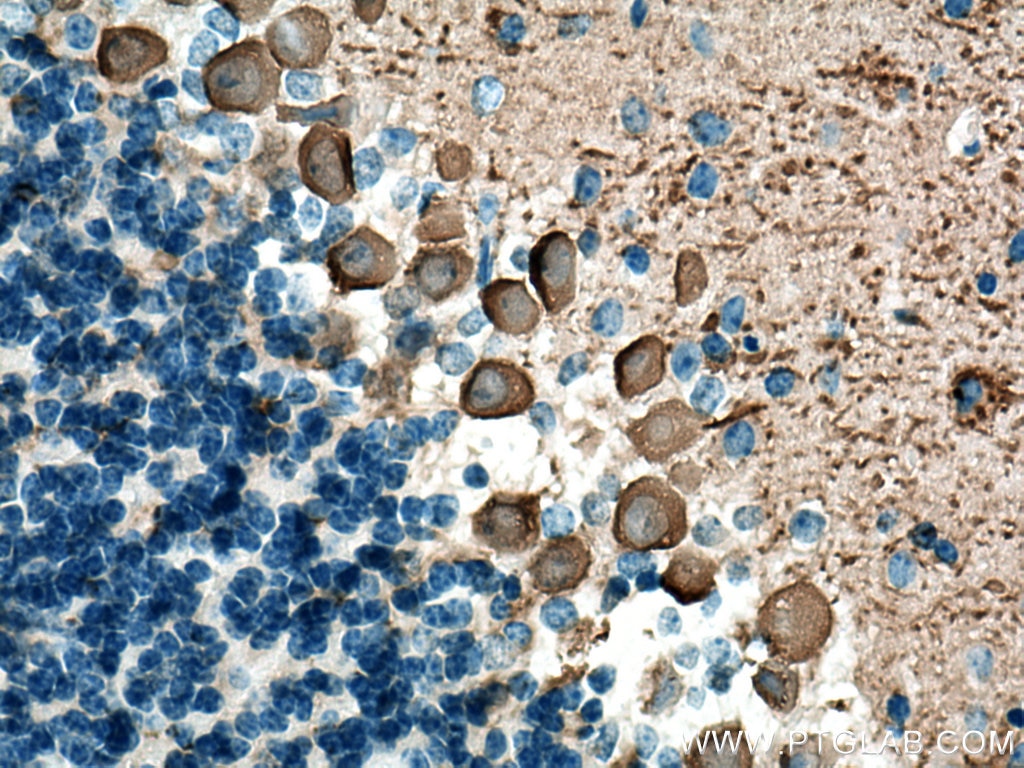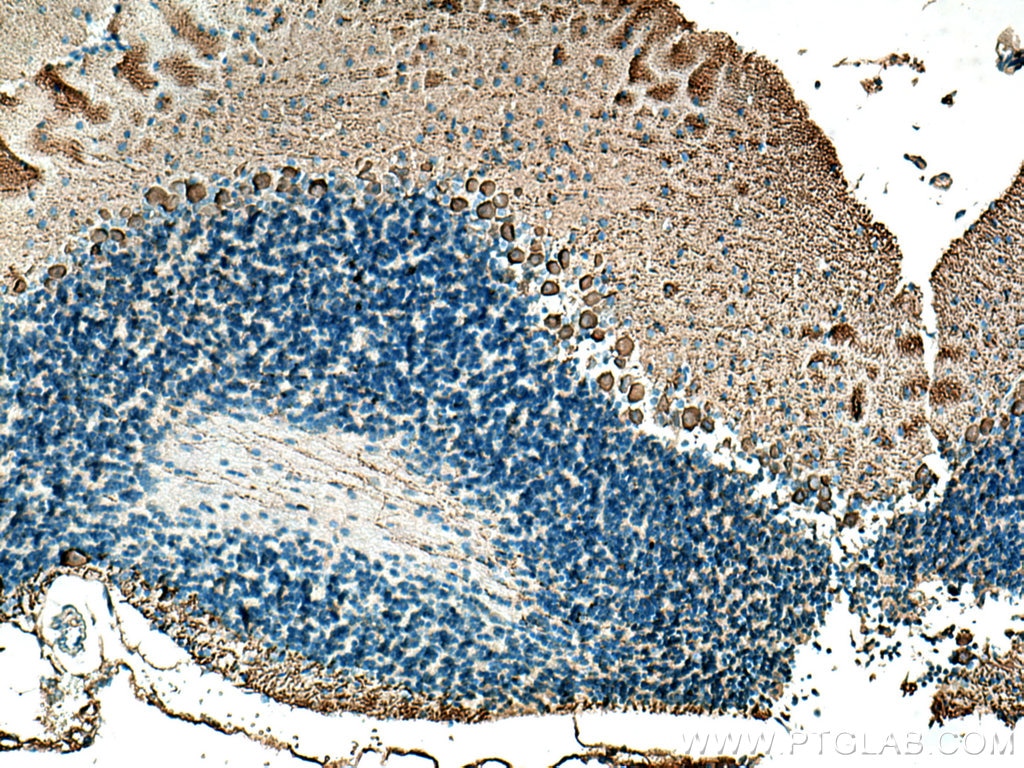- Phare
- Validé par KD/KO
Anticorps Polyclonal de lapin anti-CA8
CA8 Polyclonal Antibody for WB, IHC, IP, ELISA
Hôte / Isotype
Lapin / IgG
Réactivité testée
Humain, rat, souris
Applications
WB, IHC, IF, IP, ELISA
Conjugaison
Non conjugué
N° de cat : 12391-1-AP
Synonymes
Galerie de données de validation
Applications testées
| Résultats positifs en WB | cellules HEK-293, cellules Jurkat, cellules K-562, tissu cérébral de souris |
| Résultats positifs en IP | tissu cérébral de souris |
| Résultats positifs en IHC | tissu de gliome humain, tissu de cervelet de souris il est suggéré de démasquer l'antigène avec un tampon de TE buffer pH 9.0; (*) À défaut, 'le démasquage de l'antigène peut être 'effectué avec un tampon citrate pH 6,0. |
Dilution recommandée
| Application | Dilution |
|---|---|
| Western Blot (WB) | WB : 1:2000-1:12000 |
| Immunoprécipitation (IP) | IP : 0.5-4.0 ug for 1.0-3.0 mg of total protein lysate |
| Immunohistochimie (IHC) | IHC : 1:50-1:500 |
| It is recommended that this reagent should be titrated in each testing system to obtain optimal results. | |
| Sample-dependent, check data in validation data gallery | |
Applications publiées
| KD/KO | See 2 publications below |
| WB | See 2 publications below |
| IHC | See 5 publications below |
| IF | See 2 publications below |
| IP | See 2 publications below |
Informations sur le produit
12391-1-AP cible CA8 dans les applications de WB, IHC, IF, IP, ELISA et montre une réactivité avec des échantillons Humain, rat, souris
| Réactivité | Humain, rat, souris |
| Réactivité citée | rat, Humain, souris |
| Hôte / Isotype | Lapin / IgG |
| Clonalité | Polyclonal |
| Type | Anticorps |
| Immunogène | CA8 Protéine recombinante Ag3068 |
| Nom complet | carbonic anhydrase VIII |
| Masse moléculaire calculée | 290 aa, 32 kDa |
| Poids moléculaire observé | 32-35 kDa |
| Numéro d’acquisition GenBank | BC015531 |
| Symbole du gène | CA8 |
| Identification du gène (NCBI) | 767 |
| Conjugaison | Non conjugué |
| Forme | Liquide |
| Méthode de purification | Purification par affinité contre l'antigène |
| Tampon de stockage | PBS with 0.02% sodium azide and 50% glycerol |
| Conditions de stockage | Stocker à -20°C. Stable pendant un an après l'expédition. L'aliquotage n'est pas nécessaire pour le stockage à -20oC Les 20ul contiennent 0,1% de BSA. |
Informations générales
The CA8 (CARP) gene encodes carbonic anhydrase VIII, which is part of a family of zinc metalloenzyme. CA8 has a central carbonic anhydrase motif, but it lacks carbonic anhydrase activity due to absence of catalytic zinc coordinating residues(PMID:2121526). CARP is a novel IP3R1-binding protein, and is expressed in Purkinje cells abundantly. CA8 is co-localized with IP3R1 in Purkinje cells and it binds to IP3R1, reducing the affinity of the receptor for its ligand, IP3(PMID:12611586). Defects in CA8 are the cause of cerebellar ataxia mental retardation and dysequilibrium syndrome type 3 (CMARQ3)(PMID:19461874).
Protocole
| Product Specific Protocols | |
|---|---|
| WB protocol for CA8 antibody 12391-1-AP | Download protocol |
| IHC protocol for CA8 antibody 12391-1-AP | Download protocol |
| IP protocol for CA8 antibody 12391-1-AP | Download protocol |
| Standard Protocols | |
|---|---|
| Click here to view our Standard Protocols |
Publications
| Species | Application | Title |
|---|---|---|
Nucleic Acids Res Short DNA/RNA heteroduplex oligonucleotide interacting proteins are key regulators of target gene silencing.
| ||
J Am Soc Nephrol Single-Cell RNA Sequencing Reveals Renal Endothelium Heterogeneity and Metabolic Adaptation to Water Deprivation. | ||
Biomed Pharmacother CA8 promotes RCC proliferation and migration though its expression level is lower in tumor compared to adjacent normal tissue.
| ||
PLoS One Mechanisms that determine the internal environment of the developing brain: a transcriptomic, functional and ultrastructural approach. | ||
Am J Physiol Gastrointest Liver Physiol Carbonic anhydrase 8 (CAR8) negatively regulates GLP-1 secretion from enteroendocrine cells in response to long-chain fatty acids. | ||
Neuron Disruption of the ATXN1-CIC complex reveals the role of additional nuclear ATXN1 interactors in spinocerebellar ataxia type 1 |
